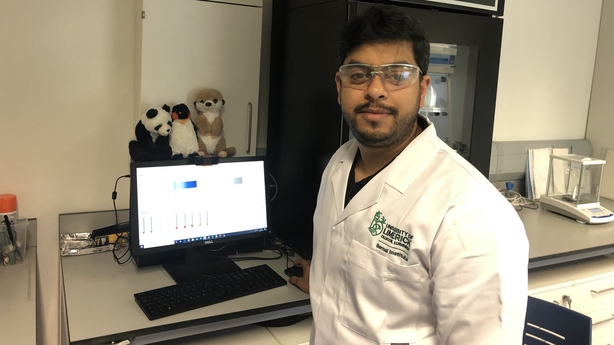A team of scientists at the Bernal Institute of Engineering and Chemical Research, based at the University of Limerick campus, has developed a new material that can capture the cancer-causing toxin Benzene from the air.
It can also be done using much less energy than science has previously allowed, meaning it could play a role in reducing our carbon footprint in the future.
In what is regarded as a world first, the new material captures even trace amounts of the chemical.
Crucially, it uses less energy to do that work, fitting in with the sustainability agenda that is so necessary to tackle climate change.
Benzene is a Class 1 carcinogen, harmful to human health and scientifically proven to cause cancer - in particular leukemia - and is harmful to blood cells and bone marrow.
It is found in cigarette smoke, smoke from lit candles, auto exhaust fumes and industry emissions.
The team at Bernal has developed a porous sponge-like material that can capture even trace amounts of the toxin at low energy levels - a challenge that has not been achieved up to now with other materials.
Professor Michael Zaworotko, a Ukrainian who is Science Foundation Ireland's research professor at Bernal and the chairperson of Crystral Engineering, also believes this work could revolutionise the search for clean air.
The goal is that this technology could eventually also capture CO2 at lower energy levels.
We need your consent to load this rte-player contentWe use rte-player to manage extra content that can set cookies on your device and collect data about your activity. Please review their details and accept them to load the content.Manage Preferences
Dr Xiang-Jing Kong is also part of the team and has carried out work that has never been done before on developing the material that captures the Benzene.
She said they are the first in the world to achieve this type of outcome developing a Swiss cheese-like porous material, which in bulk looks like sheets of blotting paper and can be used in wheel-like air purification systems.
"It can be done cheaply and is more energy efficient improving our air purification systems and more beneficial for our health. I'm very proud of the work we've done here," she said.
Prof Zaworotko describes the material as "their secret sauce".
"I believe crystals can change the world. We've developed crystals with atom or nano size holes which can attract certain chemicals, as separating certain compounds is a complex process," he said.
"In terms of energy, because the capture process is based upon physical rather than chemical bonding, the energy footprint of capture and release is much lower than previous generations of materials."
The team has already created another similar desiccant material to harvest water from the air.
This work has now been scaled up by the startup Molecule company, also based at UL, and it is now being used to provide water and irrigate parts of drought-hit Africa.

Dr Amrit Kumar, who works with the Molecule company, said they have placed several of their prototype machines in areas of Africa and can produce up to 50 gallons of water a day – enough to help a family for a week and to irrigate the lands there.
Because the water is of such a pure quality, it can also be used for medical purposes.
The goal now is to use this low energy, low-cost material to harvest CO2, and the Bernal team believes this is possible in the medium to long term.
"Our materials in each of these areas - water harvesting, benzene capture and CO2 capture - are well ahead of any other materials which came before," said Prof Zaworotko.
"I am motivated by the train wreck of what's happening with climate change at present and I am optimistic that we'll be part of solving the energy crisis in the world."







